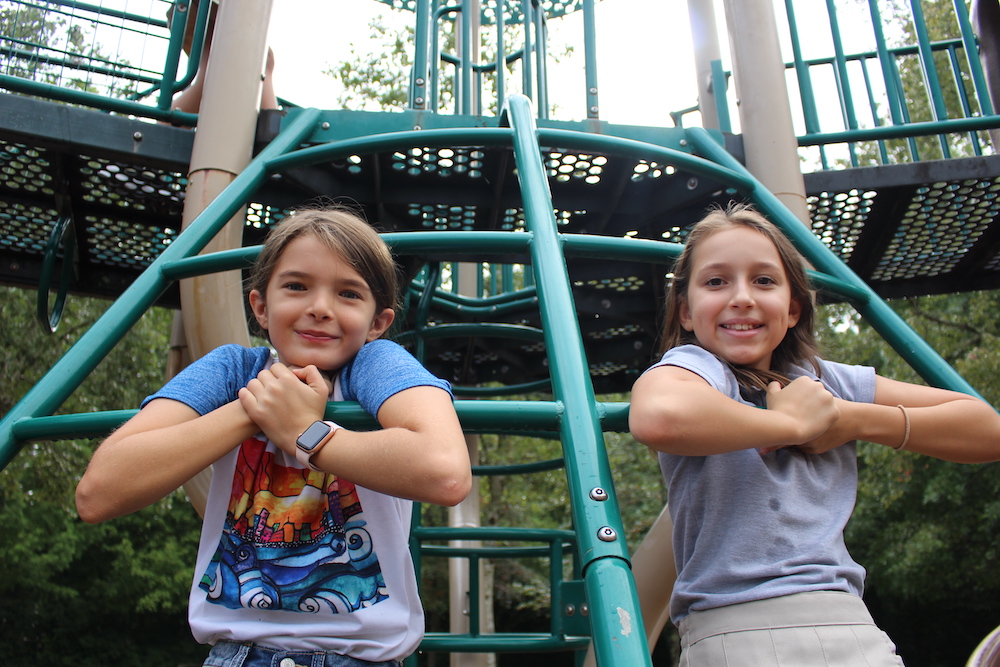Grade 5 is starting the year with a Project-Based Learning (PBL) unit on playground design. Have you or your child ever seen a playground and wondered why it was built the way it was or how it could be improved? This unit encourages students to ask those same questions but this time with the intention of designing their own.
This unit took students out of the classroom to visit real world examples of what they were studying. It merged design with collaboration, math, empathy, and it exposed the students to The Compass approach, Mount Vernon’s Design Thinking methodology.
- Critique is the honest examination of the work. While there is judgment and value placed during Critique, the main spirit is to improve, enhance and make better.
- Idea Exchange is about associative thinking, connecting with a diverse network and realizing that no one person’s idea is perfect.
- Fabrication is about bringing form to ideas and making hope visible.
- Craftsmanship indicates creating a balance of form and function by dwelling on the final product long enough to get it just right.
This approach is one that students in Middle School and Upper School have practiced for years and that Lower School teachers will soon work into their curriculum.
Critique:
The students started by creating a list of likes and dislikes about playgrounds they had explored in the past. They then conducted collaborative research by looking at pictures and videos of famous playgrounds around the world. Implementing Spidea Web, a brainstorming method used to organize thoughts, students categorized their visions into groups such as age, accessibility, layout, and location.
On Tuesday, August 23, Grade 5 students participated in one of six different expeditions around Atlanta: Exploring Chastain Park, Riverside Road Park, Morgan Falls Overlook Park, Peachtree Corners Park, Swift Cantrell Park, and Dunwoody Nature Center. While there, students made observations about the park’s equipment, layout, and accessibility by taking notes and snapping photos on their iPads. Students were led to think about their own playground design ideas. “How can they be accessible and fun for children with impairments? Can I make it inviting for children of all ages? Will my park be sustainable?”
Idea Exchange:
After exploring somewhat unfamiliar parks on Tuesday, students evaluated two known play areas in a brand new light – Hammond Park and The Mount Vernon Frontier. They took notes on observations, connections, and questions about these play spaces and the playgrounds they visited on Tuesday.
Fabrication:
With multiple days of research under their belts and teams formed, Grade 5 will soon turn to the drawing board with the intentions of designing a playground that could replace the Lower Campus Turf Field.
Craftsmanship:
In their small groups, students will create a spreadsheet of the items they would like to purchase with a budget of $30,000. “This theoretical budget increased from last year’s due to inflation and supply chain issues,” Emily Edwards, Grade 5 Head of Grade explained. “We were able to include a mini supply and demand lesson into this unit that we did not include last year.”
With detailed designs down on paper, the students will sketch to-scale models with the help of MVXpert and Landscape Architect, Jeff Allen. And finally create a larger scale drawing with the intention of presenting their design journey to the class.



